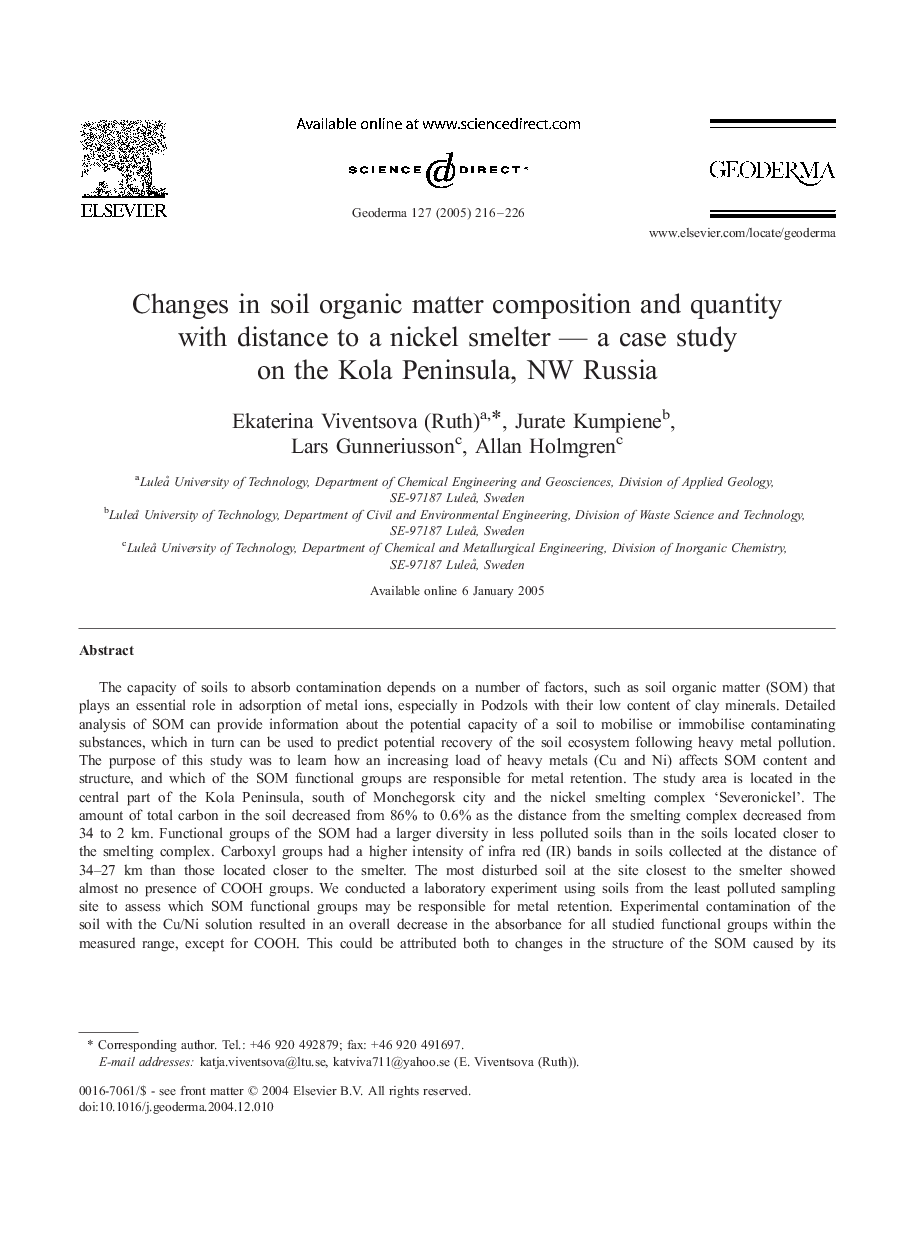| کد مقاله | کد نشریه | سال انتشار | مقاله انگلیسی | نسخه تمام متن |
|---|---|---|---|---|
| 9490503 | 1629577 | 2005 | 11 صفحه PDF | دانلود رایگان |
عنوان انگلیسی مقاله ISI
Changes in soil organic matter composition and quantity with distance to a nickel smelter - a case study on the Kola Peninsula, NW Russia
دانلود مقاله + سفارش ترجمه
دانلود مقاله ISI انگلیسی
رایگان برای ایرانیان
کلمات کلیدی
موضوعات مرتبط
مهندسی و علوم پایه
علوم زمین و سیارات
فرآیندهای سطح زمین
پیش نمایش صفحه اول مقاله

چکیده انگلیسی
The capacity of soils to absorb contamination depends on a number of factors, such as soil organic matter (SOM) that plays an essential role in adsorption of metal ions, especially in Podzols with their low content of clay minerals. Detailed analysis of SOM can provide information about the potential capacity of a soil to mobilise or immobilise contaminating substances, which in turn can be used to predict potential recovery of the soil ecosystem following heavy metal pollution. The purpose of this study was to learn how an increasing load of heavy metals (Cu and Ni) affects SOM content and structure, and which of the SOM functional groups are responsible for metal retention. The study area is located in the central part of the Kola Peninsula, south of Monchegorsk city and the nickel smelting complex 'Severonickel'. The amount of total carbon in the soil decreased from 86% to 0.6% as the distance from the smelting complex decreased from 34 to 2 km. Functional groups of the SOM had a larger diversity in less polluted soils than in the soils located closer to the smelting complex. Carboxyl groups had a higher intensity of infra red (IR) bands in soils collected at the distance of 34-27 km than those located closer to the smelter. The most disturbed soil at the site closest to the smelter showed almost no presence of COOH groups. We conducted a laboratory experiment using soils from the least polluted sampling site to assess which SOM functional groups may be responsible for metal retention. Experimental contamination of the soil with the Cu/Ni solution resulted in an overall decrease in the absorbance for all studied functional groups within the measured range, except for COOH. This could be attributed both to changes in the structure of the SOM caused by its reaction with the contaminating substances, and to the leaching of some of the organic compounds from the soil during the experiment. Further studies are needed to better understand which functional groups in the SOM are active in the adsorption processes.
ناشر
Database: Elsevier - ScienceDirect (ساینس دایرکت)
Journal: Geoderma - Volume 127, Issues 3â4, August 2005, Pages 216-226
Journal: Geoderma - Volume 127, Issues 3â4, August 2005, Pages 216-226
نویسندگان
Ekaterina Viventsova Ruth, Jurate Kumpiene, Lars Gunneriusson, Allan Holmgren,